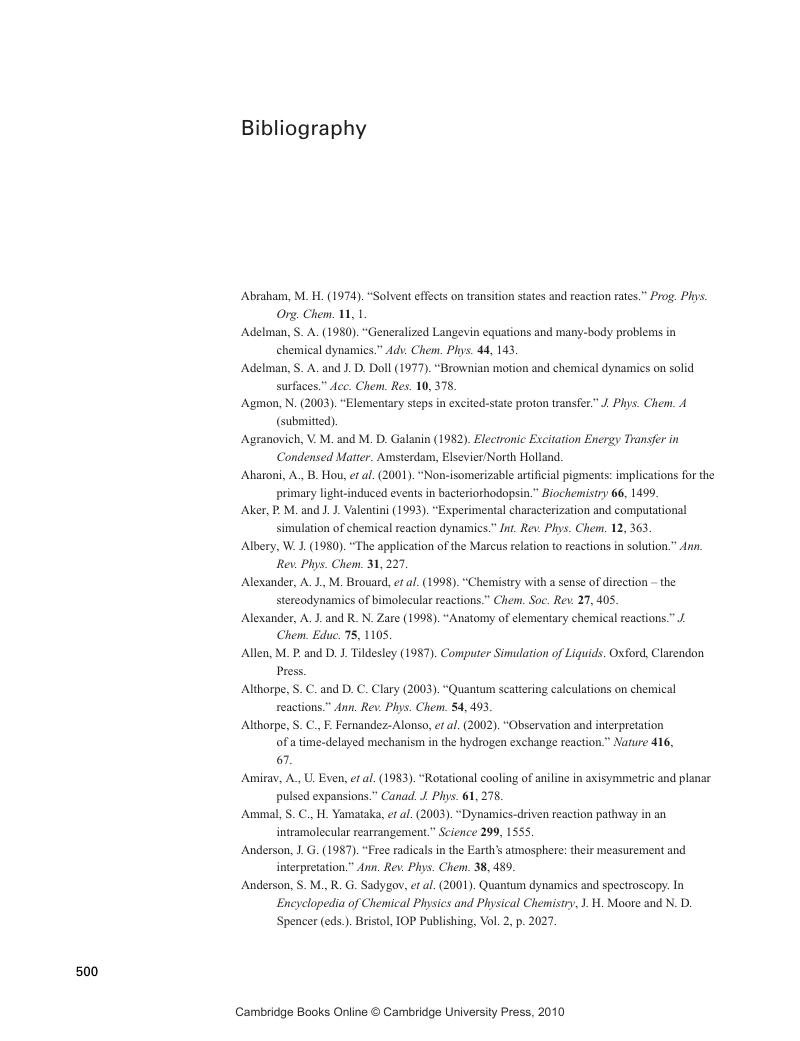Book contents
- Frontmatter
- Contents
- Preface
- Acknowledgments
- 1 Understanding chemical reactions at the molecular level
- 2 Molecular collisions
- 3 Introduction to reactive molecular collisions
- 4 Scattering as a probe of collision dynamics
- 5 Introduction to polyatomic dynamics
- 6 Structural considerations in the calculation of reaction rates
- 7 Photoselective chemistry: access to the transition state region
- 8 Chemistry in real time
- 9 State-changing collisions: molecular energy transfer
- 10 Stereodynamics
- 11 Dynamics in the condensed phase
- 12 Dynamics of gas–surface interactions and reactions
- Bibliography
- Index
- References
Bibliography
Published online by Cambridge University Press: 18 December 2009
- Frontmatter
- Contents
- Preface
- Acknowledgments
- 1 Understanding chemical reactions at the molecular level
- 2 Molecular collisions
- 3 Introduction to reactive molecular collisions
- 4 Scattering as a probe of collision dynamics
- 5 Introduction to polyatomic dynamics
- 6 Structural considerations in the calculation of reaction rates
- 7 Photoselective chemistry: access to the transition state region
- 8 Chemistry in real time
- 9 State-changing collisions: molecular energy transfer
- 10 Stereodynamics
- 11 Dynamics in the condensed phase
- 12 Dynamics of gas–surface interactions and reactions
- Bibliography
- Index
- References
Summary

- Type
- Chapter
- Information
- Molecular Reaction Dynamics , pp. 500 - 542Publisher: Cambridge University PressPrint publication year: 2005



